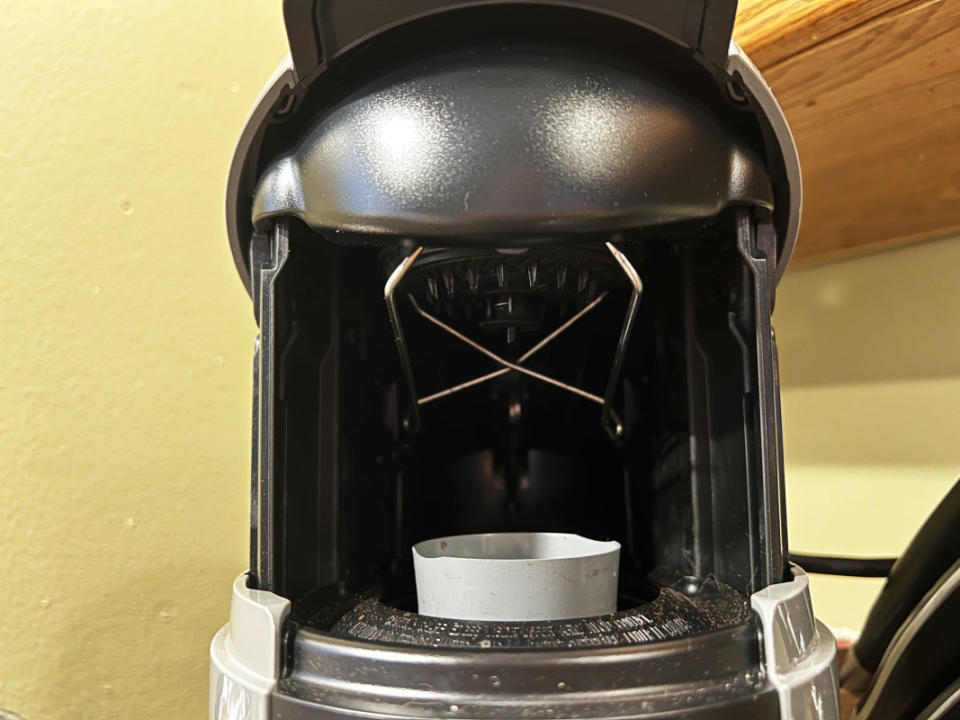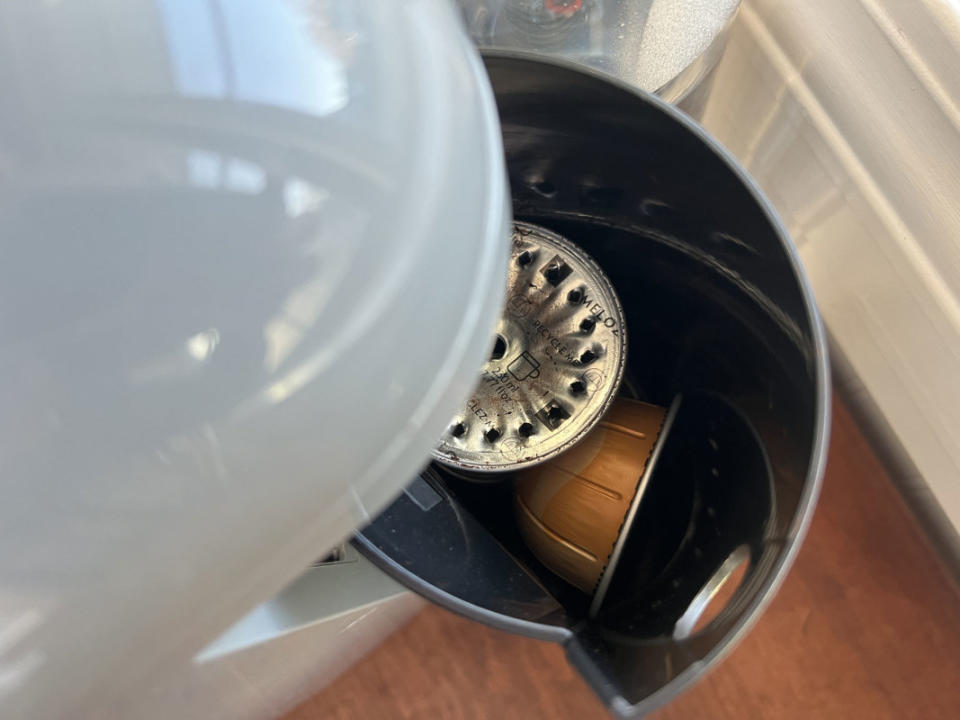How to Clean a Nespresso Machine
Men’s Journal aims to feature only the best products and services. If you buy something via one of our links, we may earn a commission.
Just like with any coffee maker that uses pods to create the perfect brew, taking good care of your Nespresso machine is important (and often overlooked). Adopting a simple cleaning routine is the best way to ensure that the quality and taste of your morning coffee remain impeccable. Having a cleaning schedule for your Nespresso combats the buildup of mineral deposits and ensures that it will work well for a long time to come.
1. Regular Cleaning
Turn off the machine and unplug it.
Remove and empty the drip tray and capsule container.
Wash the drip tray and capsule container with warm, soapy water. Rinse and dry thoroughly.
Wipe the exterior of the machine with a clean cloth.
Dump out old water and wash the water tank with warm water and dish soap, rinse it thoroughly, and allow it to air dry.
Use a damp cloth to wipe the area around the coffee outlet and the coffee spout.
2. Descaling
Buy a Nespresso descaling kit or a compatible descaling solution. (They're only about $10!)
Empty the water reservoir and pour the descaling solution into the tank according to the instructions on the descaling kit.
Fill the water tank with clean water up to the descaling mark.
Place a container under the coffee outlet to catch the liquid.
Turn on the machine and start the descaling cycle as per the manufacturer's instructions.
Once the descaling mode is complete, check for residual lime scale.
Rinse the water tank thoroughly and fill it with fresh water.
Run a few cycles of water through the machine to rinse out any remaining descaling solution.
3. Cleaning the Frother
If your Nespresso machine has a milk frother or a steam wand, detach it from the machine.
Wash the frother attachment with warm, soapy water. Rinse it thoroughly.
Wipe the frother base with a damp cloth.
Dry before reattaching it to the coffee machine.

Emily Fazio
4. Cleaning the Brew Unit
Refer to your machine's manual for instructions on how to remove and clean the brew unit.
If removable, rinse the brew unit under warm water to remove any coffee residues.
Allow the brew unit to air dry completely before reinserting it into the machine.
5. Maintenance
Regularly check and clean the machine's piercing needle to ensure it is free from any blockages.
9 Things to Avoid When Cleaning Your Nespresso
Do not use abrasive cleaners or scouring pads on any part of the machine.
Avoid submerging the machine in water.
Do not use strong chemical cleaners or bleach because they can damage the internal components.
Avoid using sharp objects to clean the machine, as they may scratch the surface.
Always use water during the descaling process.
Don't use a machine with visible damages or if it's malfunctioning; instead, contact Nespresso customer support for assistance.
Avoid using vinegar or lemon juice as a descaling agent. If damage occurs from a homemade solution, it can void your warranty.
Do not touch hot surfaces of an espresso machine without proper protection.
Avoid using excessive force when handling delicate parts of the machine, such as the brew unit or the milk frother.

Emily Fazio
FAQ
How often should you clean the machine?
You should empty the drip tray and capsule container daily.
Weekly cleaning involves washing the water tank, drip tray, and capsule container with warm, soapy water, along with wiping the machine's exterior.
Descale the machine monthly, or more frequently if needed. (P.S. if you have mineral-heavy tap water, it may clog up more often. Substitute with bottled water to extend time between descalings). Always refer to your machine's manual for specific descaling instructions.
How do I know if my Nespresso needs descaling?
If your coffee maker is brewing slower than usual, has reduced water flow, or is producing lukewarm espresso, it time to descale. Other indicators are if it is making strange noises during operation, or of course, if the machine displays error messages indicating scale buildup. Cleaning on a regular basis will keep your morning running smoothly by having your machine ready to go.
What should I do if my coffee tastes weird after cleaning?
If your coffee tastes strange after cleaning your Nespresso machine, check that you've thoroughly rinsed all parts in clean water. Pay close attention to the machine head and coffee outlet where residue may have gotten stuck. Flush the machine with a liter of water to really rinse it out. Check the machine's settings for any adjustments that may have been unintentionally made during cleaning. If using new coffee capsules, allow for a few brews to adjust to any potential taste differences. If the issue persists, consider repeating the cleaning process and drying all parts thoroughly before use. If problems continue, contact Nespresso customer support for assistance.

